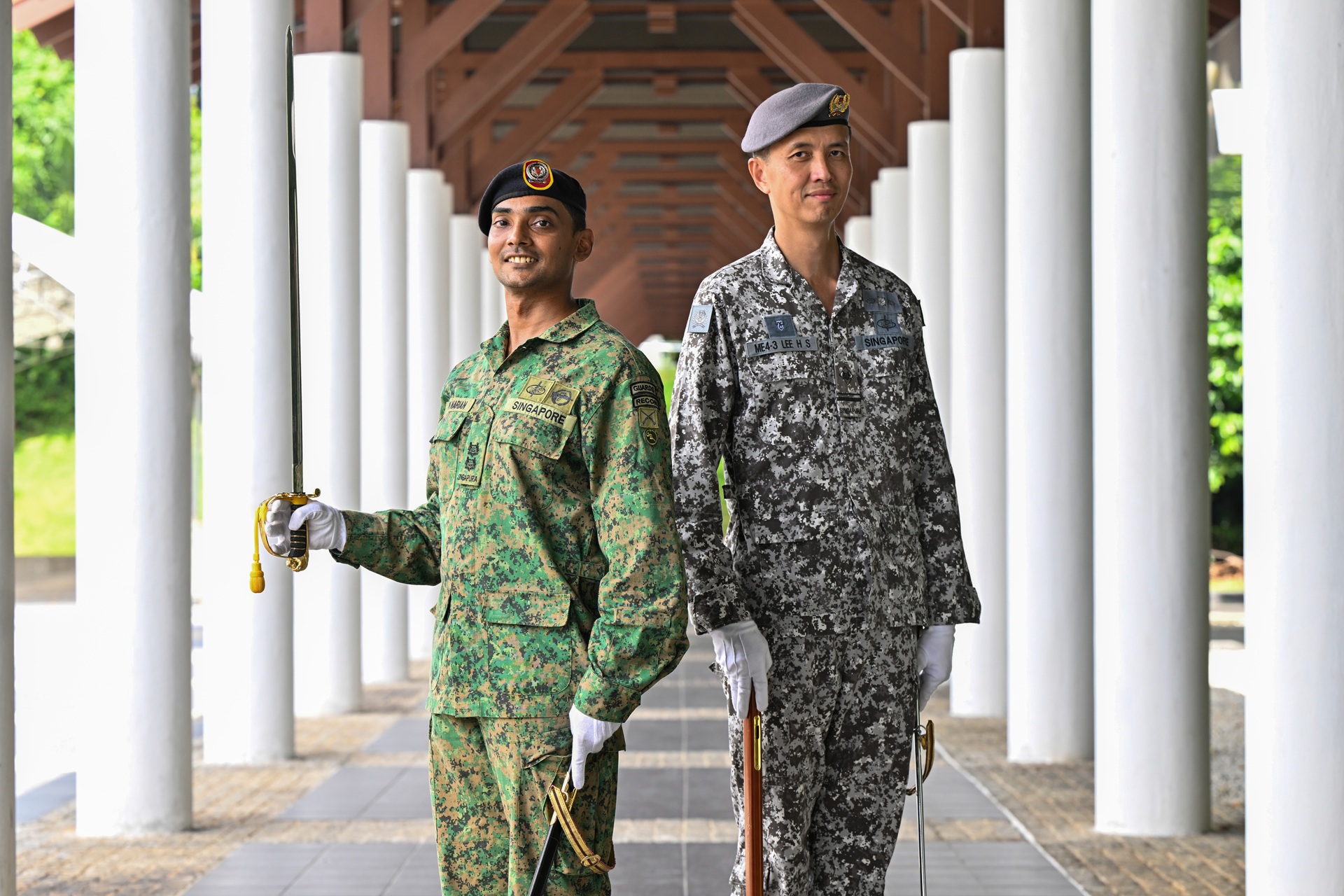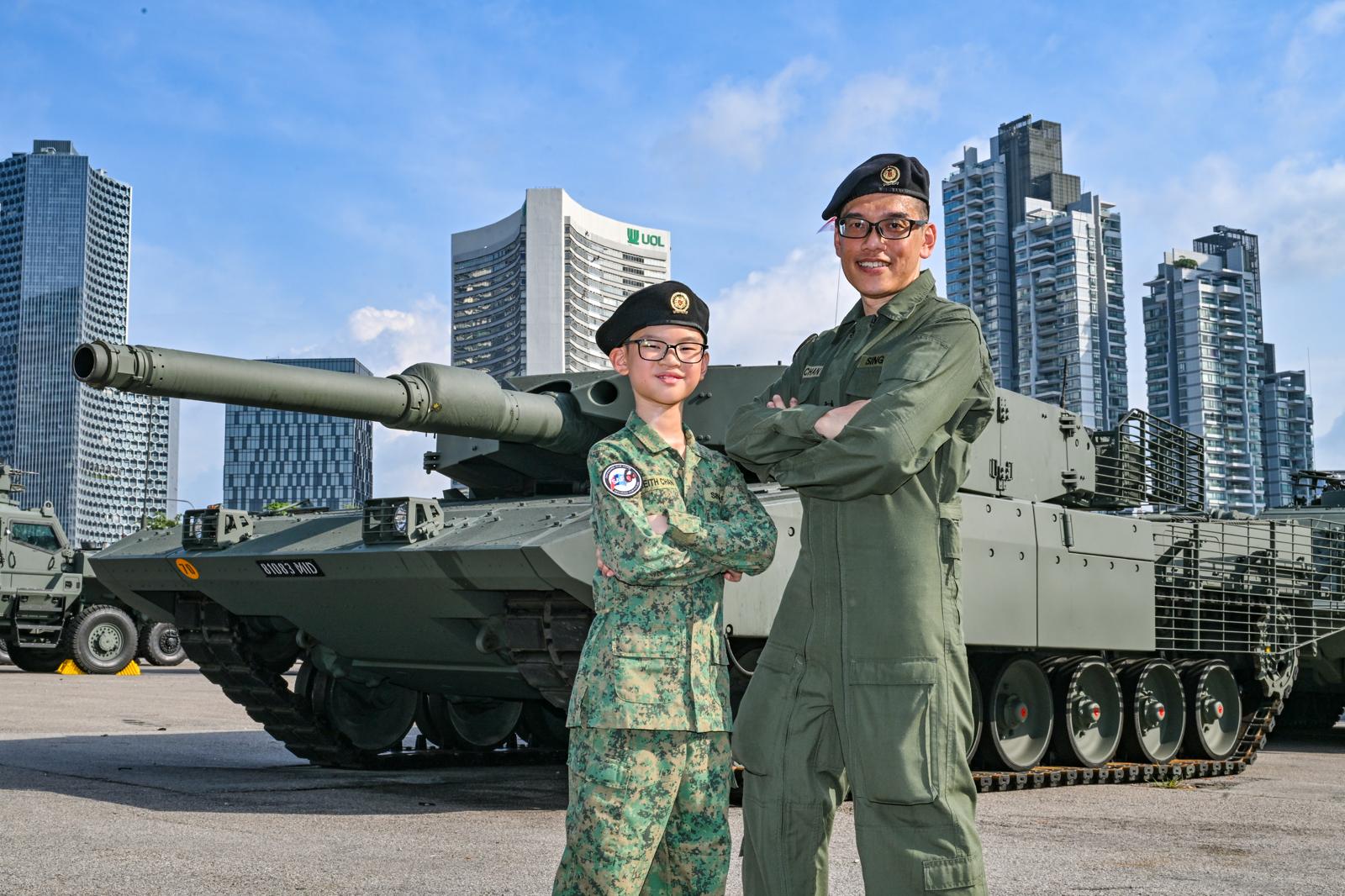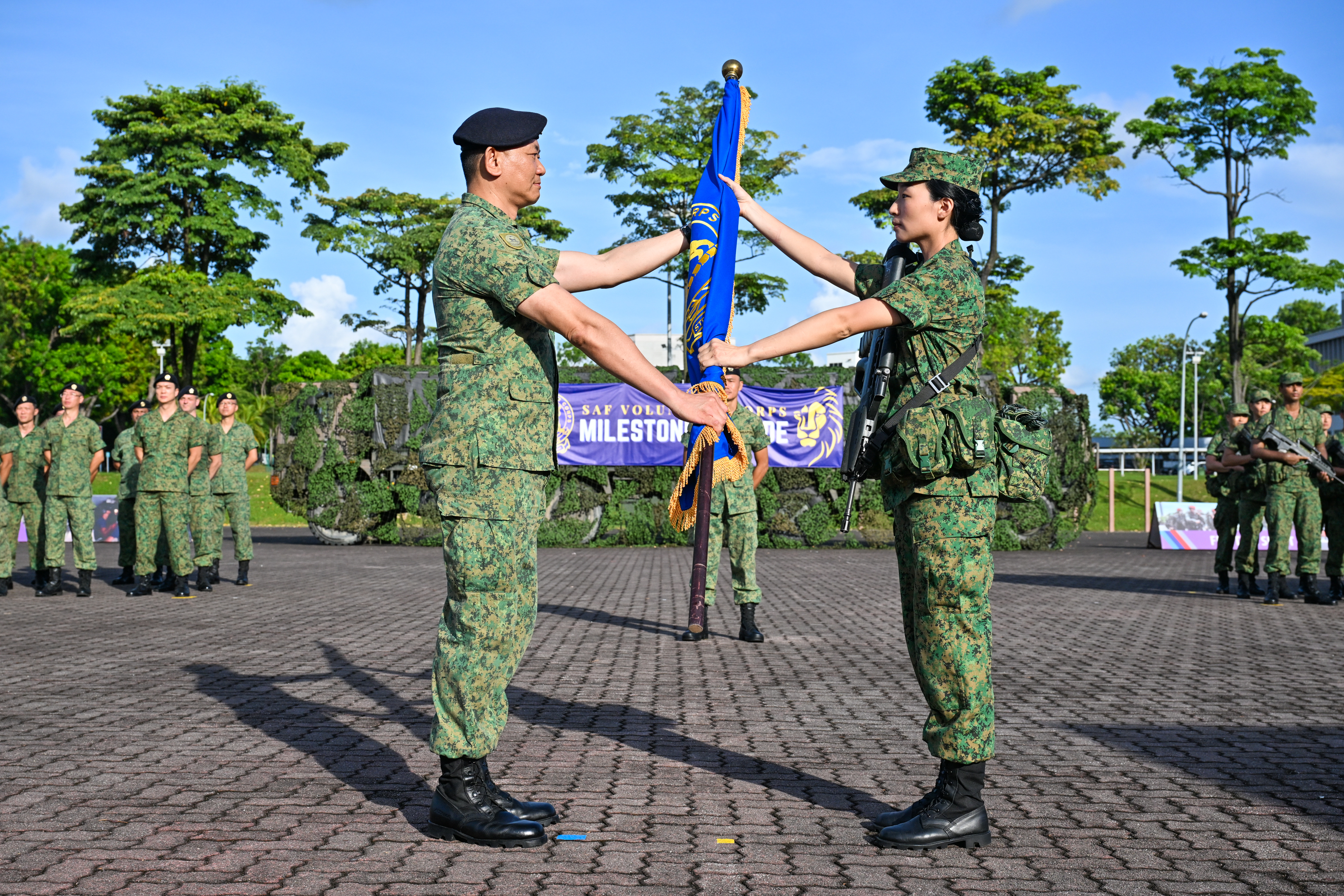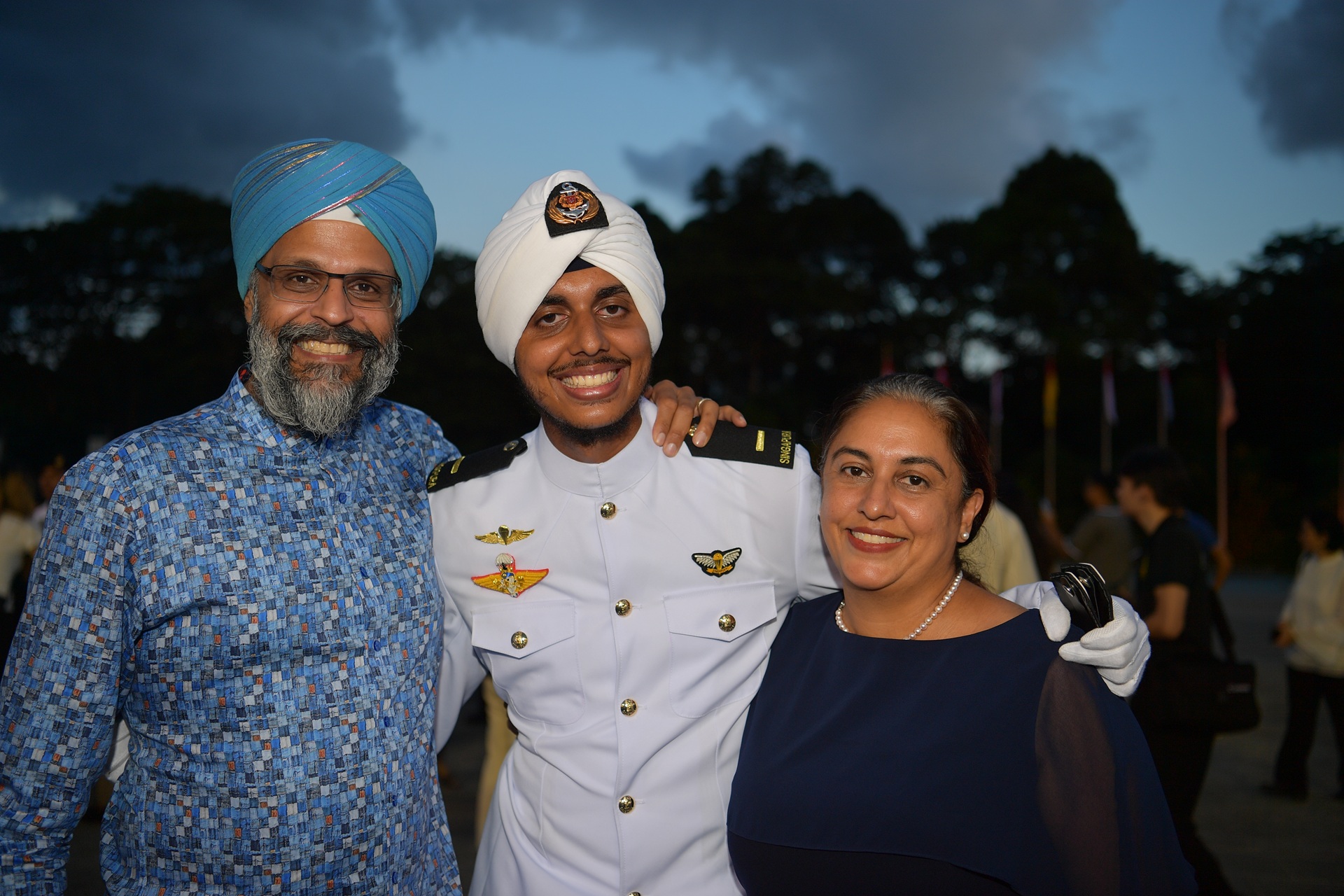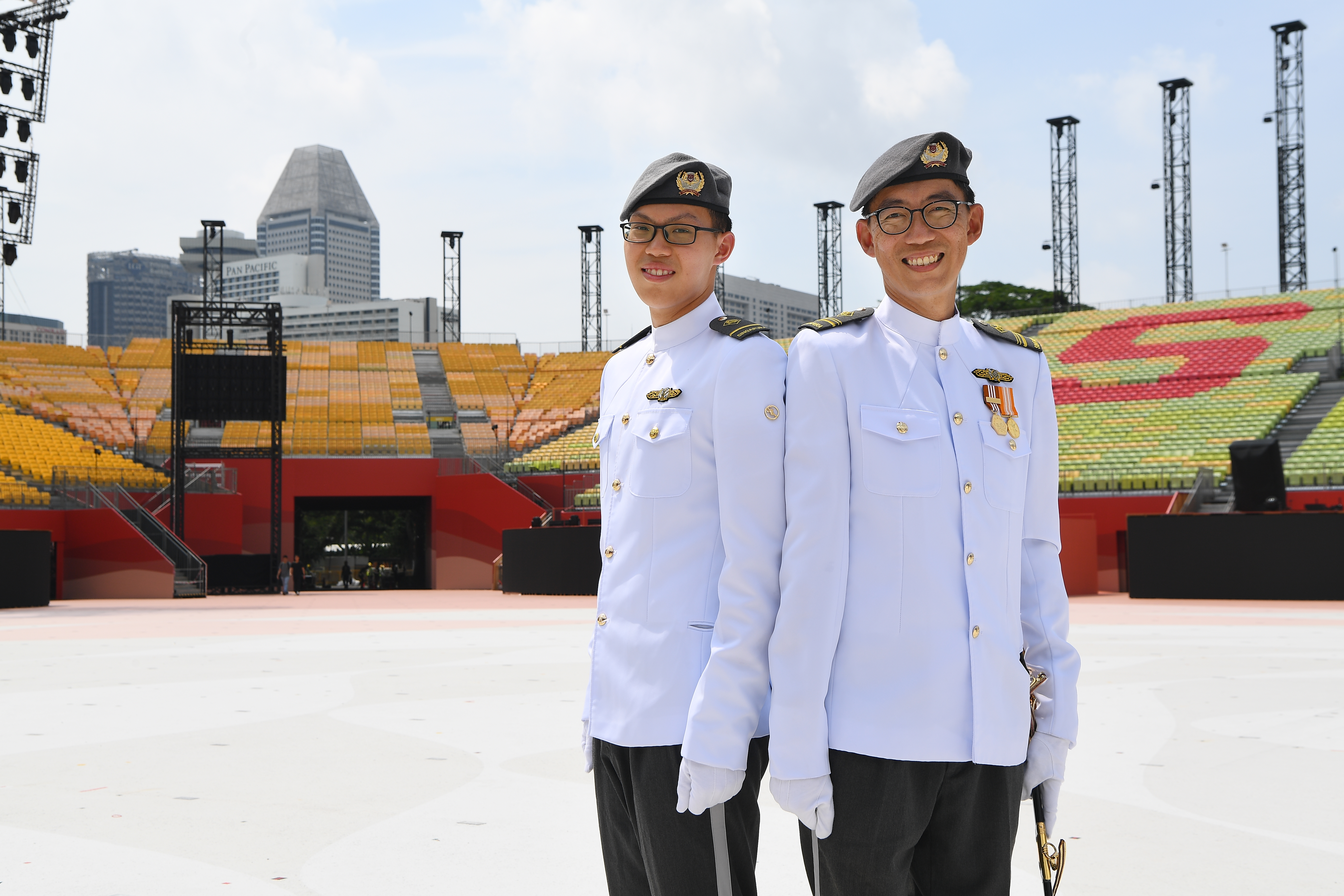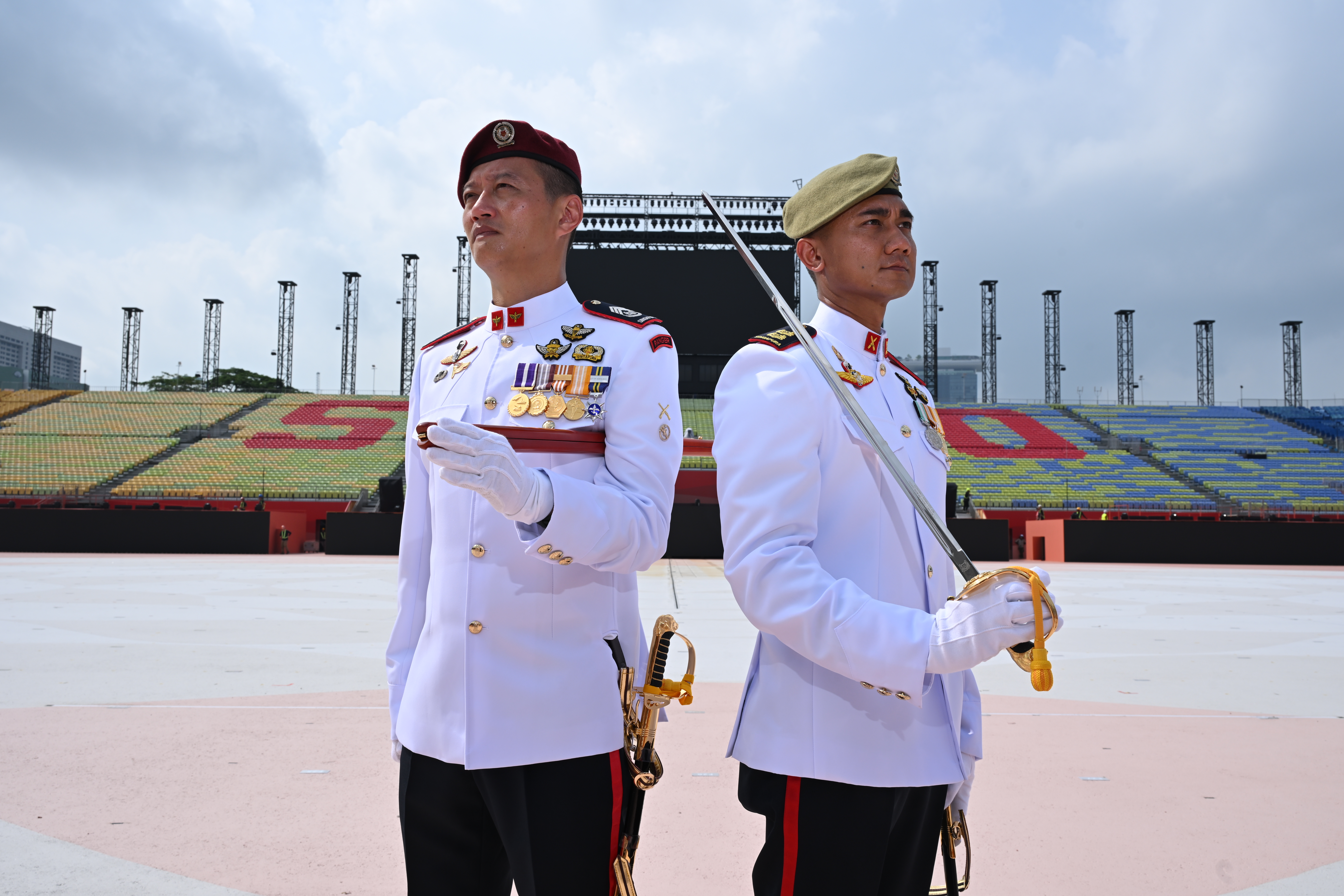FEMALES IN THE FORCE
TO COMMEMORATE INTERNATIONAL WOMEN’S DAY, PIONEER TAKES A LOOK AT SIX INSPIRING SERVICEWOMEN WHO HAVE STEPPED UP TO DEFEND SINGAPORE.
Daring. Cool. Gung-ho. These words may come to mind when you see a woman in uniform. But the women in the Singapore Armed Forces (SAF) don’t just look garang (tough). Each one of them is also a strong soldier, skilled expert and respected leader in her own way.
The SAF recruited its first female combatants in 1986, who served as artillery gunners, pilots and intelligence analysts. Then in 1993, the first batch of women were awarded the SAF Merit Scholarship, to groom outstanding female officers to take up senior leadership positions.
These days, “women in the military” is no longer something that would raise an eyebrow. They stand shoulder to shoulder with their male counterparts in both rank and role.
Women now make up eight per cent of the SAF’s Regular force. This includes about 1,500 women serving as officers, warrant officers and specialists, and military experts.
From a young guardswoman taking on her first command tour, to a naval officer who drafts policies to help plan the way ahead for the Navy, here are six women who strive to make a difference in the SAF.
Woman on the frontline
She may not look it, but this petite lady can complete a half-Ironman triathlon and rough it out with troopers in the jungle. You would not expect any less of her. 1st Sergeant (1SG) Chin is after all, a Guardswoman — and the only female Guards Warrant Officer and Specialist (WOSPEC) at that.
As a platoon sergeant, she has 30 young Guardsmen under her charge. Her job is to train them in weapon proficiency and soldiering drills. In her own words, she is the “first person they see in the morning and the last person they see before they go to sleep”.
1SG Chin shares more about what makes a Guardswoman.
Why did you sign on with Guards?
I wanted to challenge myself, so I thought: “Go big or go home!” It sounded exciting — there’s heli-rappelling and we do humanitarian aid as part of our formation’s mission profile. So I just went for it and I’ve never looked back.
How did your family react?
Back then, my mum was against it. But Dad was always supportive and eventually, Mum came to terms with it. Later, my younger brother signed on as well (as a Combat Engineer). Now I think my mum must feel very safe with two people protecting her!
What has been your proudest moment?
I was on an overseas exercise with my company. The guys were having a tough time walking because it was raining and the terrain was undulating, but they pushed on. That’s when I saw their resilience and determination.
They were looking up to me so I couldn’t give up either, and I just said: “Okay, let’s do this together.” Eventually, we all finished the exercise. Accomplishing it with them made it even more fulfilling.
What do people say when you tell them you’re a Guardswoman?
A lot of people tell me to do my best, ’cos it’s really tough to be in Guards. Of course, there’ve also been many people who say: “Eh come on, you will never make it.”
Have people actually said that?
Yes, there were times I would go home and question myself whether it was really worth it.
Or I would share my feelings with my friends and they would say: “See, that’s why you’ll never make it.” It’s tough love. But I think my actions and my being here speak volumes.
So when did you feel it was worth it?
It’s through interaction with all the boys (in my platoon). Seeing how they grow and develop — from not knowing how to fold their uniforms to being proficient in their fighting and weapons — really gives me a sense of satisfaction.
They sometimes say: “Platoon Sergeant, because you are fighting alongside me, I don’t dare to give up… I don’t know how you can do this but if you are here, I guess I better suck it up.” (laughs)
They spur me on to do better and I also try to be a positive influence to them. Now, as I’m about to leave my current role, I want to do the same in my next appointment.
You’re always on the ground with the guys — how do you manage your personal time?
Weekends are short so I make the most out of them. I exercise with my husband, meet up with some of my friends and, more importantly, spend time with my mother. She’s a needy one. (laughs)
Has her impression of the Army changed since you first enlisted?
My mum has started to join in all the Army conversations. When we go out and she sees people in uniform, she’ll say: “Oh he has a JCC (Jungle Confidence Course) badge, oh he’s a Captain, oh what is this…”. She’s become a proud military mum!
Braving the tides
She signed on for an adventure and has certainly lived it. Just two years into her job, Military Expert (ME) 1 Sandyha sailed to the waters off Hawaii with the Republic of Singapore Navy (RSN) to take part in the world’s largest international maritime exercise, Rim of the Pacific (RIMPAC) 2018.
The Command & Control (C2) Operator’s role puts her in the Combat Information Centre (CIC), the tactical nerve centre of the frigate. She processes information on surface threats for the Principal Warfare Officer (PO) to make informed decisions on how the warship should plan its attack.
ME1 Sandyha tells us about missing home and the challenges of her tasks at sea.
Why did you join the Navy?
After polytechnic, my friend signed on with the Air Force — that’s how I got to know about the SAF. The Navy was very new to me; back then I just wanted to see the world.
How did your family react?
My mum was a bit hesitant because she thought it was a guy’s job and I would not survive in a male-dominated environment. But she’s changed her tone. If you ask her now, she’d say: “Yes, this is the job for her.”
Why? Did being in the Navy change the way you do things?
I’ve become mentally stronger. If there was a problem, I used to just leave it for a few days. But working with the people here taught me to face my problems: You don’t need to bring today’s problem to the next day, just deal with it.
How do you keep up the energy to do six-hour shifts in the CIC?
It’s mostly because I don’t want to get a scolding! (smiles) But I also know that I’ve got a part to play. Whenever I feel sleepy, I will talk to my supervisor beside me while looking out for the surface picture. There’s constant teamwork in the whole CIC to check on one another.
What was it like being away from home for three months during Exercise RIMPAC?
Everyone in the crew became very close in those three months. Thanks to that, I did not miss home that much. We said: “We can’t be at home, so we make it home here.” After work, we would sit down, chit-chat, and eat together. Of course, I still felt the pinch because I could not see my mum. But it was a good experience which has made me more independent.
What’s the most encouraging thing someone has said to you?
There are a lot! (The biggest one was) when I went on a five-day sail on another ship (RSS Formidable). It was a last-minute sail and when I came back, I was very tired.
Then I turned on my phone and saw messages from my C2 department group chat, saying: “You did us proud, Sandyha.”
Wah, that was the best feeling. Before that, I’d only gotten a scolding in the group chat. So it was very encouraging — it was one of the first instances where I realised I was improving.
When did you know this was the right job for you?
When I took on the role of a C2 Surface Picture Compiler during that RSS Formidable sail. At first, I thought I couldn’t do it. But on that day, I got all the processes right without supervision, I was just on fire. When I finished that exercise, I knew that I’d done everything right and I felt content knowing I’d helped the whole ship.
Has your impression of the Navy changed after signing on?
I thought the Navy would be like a cruise. But now, I know there really are threats out there and that the RSN has to do a lot to protect our waters. Every time we slip off (from harbour) we know that there are threats out there. So when we sail, we leave with one idea: “We go out as one, we come back as one.”
SAF Firsts: Setting the stage for women leaders
- Brigadier-General Gan Siow Huang is the SAF’s highest ranking female officer. She made history when she became Singapore’s first female general in 2015, at the age of 40. An Air Warfare Officer by training, she now heads the Air Power Generation Command.
- Colonel Jerica Goh was the first female colonel in the RSN and the first female Commanding Officer of a frigate, when she took charge of RSS Supreme in 2013. The 44-year-old now serves as the Head of Naval Training.
- Chief Warrant Officer (CWO) Jennifer Tan, 53, is the first female Chief Warrant Officer. This is the pinnacle rank for the SAF Warrant Officer Corps. After joining the SAF in 1984, CWO Tan rose through the ranks in the Armour Formation and is now Commanding Officer of the Armour Combat Training Centre.
Soaring to new heights
She is not just a pilot. Major (MAJ) Lou is also the only female Sikorsky S-70B Seahawk Naval Helicopter pilot in the Republic of Singapore Air Force (RSAF). Unlike conventional fighter or transport pilots, her role is to support the Navy’s frigates in anti-submarine and anti-surface warfare.
In her operations, MAJ Lou sails with the Navy, then flies out to look for vessels — extending the frigate’s range by helping it to see and strike further. At Sembawang Air Base, she serves as the Deputy Officer Commanding and Assistant S3 of 123 SQN, guiding junior aircrew and taking charge of daily scheduling to ensure that everyone in the squadron meets their flying requirements.
Joining the Singapore Youth Flying Club (SYFC) eventually led you to join the RSAF. Tell us how that happened.
It was a twist of fate. An SYFC lady came to my school to talk about the club. As a 17-year-old girl then, it sounded pretty cool to get to fly a plane... I learnt to fly even before I learnt to drive! Sometimes we would see RSAF pilots flying with the SYFC and we would look at them with admiration and aspire to be like them. That led me to where I am today.
What’s it like being the only female naval helicopter pilot?
I don’t really think about it. When I’m here, my focus is really like any pilot: to fly well, accomplish the mission and do it safely.
There’s also a female Tactical Aircraft Coordination Officer and an Air Force Engineer in my squadron, so it’s not like I’m the only one! There’s also Lieutenant Colonel (LTC) Christine Sim, Commanding Officer of 125 Squadron (SQN), whom we sometimes go to for advice.
*LTC Sim was Singapore’s first female helicopter pilot.
What is your biggest achievement in your career?
It’s been an emotional journey progressing from the Air Grading Course to the Basic Wings Course because you see some of your friends dropping out along the way. It can be painful when you’ve been with them for almost nine months, studying with them, and then they suddenly pack their belongings and go (because they didn’t make the cut). It wasn’t an easy journey, and I’m thankful for making it thus far.
What has been your biggest setback?
During Exercise RIMPAC 2018, I struggled with deck landing at night. In Hawaii, the sea was rough and it was pitch black, so I had difficulty landing the aircraft while wearing NVG (Night Vision Goggles). My performance deteriorated and that was a huge setback for me — no matter how fantastic your mission, a pilot must be able to come back safely.
How did you pick yourself up after that?
The instructors were very patient and planned a lot more night flying for me. Eventually, I built up my confidence and got back to the fundamentals of deck landing.
You’ve participated in a few open houses and career fairs. What do you tell the girls when they approach you?
I always remind the girls: joining the force looks really cool, but you also need to think about how to overcome challenges and tough days, like the days away from home. It’s a lot of hard work and patience.
She’s in charge
She looks fierce, and rightly so. After all, Captain (CPT) Shirin leads a company of 99 troopers and 25 commanders. Under her charge, the troopers are being trained for the Protection of Installations and will be deployed to Changi Airport, Jurong Island or Sembawang Wharf.
It is not CPT Shirin’s first time training Full-time National Servicemen. The infantry commander has also served as an Officer Cadet School (OCS) instructor, a platoon commander (PC) in 2nd Battalion, Singapore Infantry Regiment (2 SIR), and an Officer Commanding (OC) at the Basic Military Training Centre (BMTC). She shares how she developed her strict leadership style in the Army.
Why did you sign on with the Army?
My dad was a warrant officer at BMTC. Back then in the 90s, he would bring my siblings and me to explore the jungles, catch spiders and just have our own adventure. In my teenage years, signing on was always at the back of my mind because I felt that I could do well in a regimental environment.
How did your friends react?
It was “typical Shirin”. (laughs) In school, we had to write down our ambitions and I put mine as “Army Officer”.
What has been your proudest achievement?
There’s a sense of achievement in every appointment. When I was a PC in 2 SIR, I had to manage 12 Terrex vehicles and their crew. I saw the men grow from knowing nothing to being able to operate the Terrex safely.
At the end of the two years, we went for our ATEC (Army Training Evaluation Centre) evaluation and became the first Terrex battalion to get REDCON 2A (the second-highest grade attainable). It was the best feeling ever. We even set the benchmark for all the other Terrex battalions.
What about your toughest experience?
My hardest times were in OCS. My instructors would get me to go after the 2.4km Men’s Gold timing and they also trained me to do pull-ups. So I was always struggling, always tired.
One of the instructors told me: “We have been very harsh on you because we know you can take it. It’s because we are pushing you to be the Best in Physical Training (PT).” I eventually achieved the Best in PT award, so in a way it was a good thing — it made me stronger mentally and physically.
How would you describe your own leadership style?
I am strict but I am also rational and will listen to the guys if they have a good reason for asking for things. I guess if you ask the boys, they will tell you that I look very fierce but I’m still approachable. I sometimes poke fun at them so they know they can still come and talk to me.
How is the Army different for women now?
During my time in BMT, we didn’t have chaperones. Now every batch has a female chaperone to mentor the girls as they transit from civilian to military life. It can be quite difficult for a female soldier and there may be things they might not be comfortable sharing with their trainers, so the chaperone is important.
Did you speak to your female recruits while you were an OC in BMTC?
Yes, I would talk to any female recruit who comes in and tell her what to expect: that she has to rough it out with the boys, and when she goes to field camp, she cannot expect to shower. I’d tell her: you train like how the boys train. You’re being trained as a leader so you have to act like one from the very beginning.
Driving innovation for the force
As an instructor, ME3 Ang always reminds her trainees to “do the job right the first time, every time”. This is crucial because her trainees are Air Force Engineers (AFEs) and Technicians (AFTs) and their job is dealing with the RSAF’s networks, sensors and air defence weapon systems.
Besides guiding them in the right direction, ME3 Ang is also paving the way for innovation. Her project on the voice-activated Head-Mounted Tablet (HMT), which allows trainees to view an Augmented Reality video guide while working in real time, won the RSAF’s first Pitch Challenge last year, giving her the funds to start a trial implementation.
She shares with us her teaching philosophy.
How would you describe your teaching style?
I treat the trainees like my children: I can joke with them but also be strict when I need to. This makes me more approachable… Some of those who have been posted to other units even come back (to talk to me) when they have problems they face at work or in their personal lives.
Why is this important?
Building bonds with them is helpful because, apart from academic training, we need to instil our core values in them. I always share my experiences with them, for example, on why it is necessary to be punctual.
Sometimes trainees think that it’s just a school and ask, “Why do you scold me if I’m just one minute late?” But in the operational world, one minute is a big deal.
For myself, I was lucky to have had good mentors who reminded me to be meticulous in what I do, to think through everything and follow the Standard Operating Procedures (SOPs).
Tell us more about your role before you joined the Air Force Training Command.
I was an AFE in Air Defence and Operations Command — it was a 24/7 operational unit and we all understood that the mission comes first. We were working on radars, which are critical for air defence. If system errors occur, we would have to work through the night to recover the systems as soon as possible. In this environment, we cannot afford to make mistakes.
What was the idea behind your HMT project?
When I came to the school, one of the challenges I had was conducting training in confined spaces or spaces that required working at height. I wanted to find a way for instructors to see the trainee’s field-of-view so that we could coach them in real time…That’s how we started thinking about the voice-activated HMT.
Now that it’s won the RSAF Pitch Challenge, what’s next?
We collaborated with Singapore Polytechnic to develop a program where instructors can upload training videos on the HMT and trainees can view them on the HMT’s micro-display. The school recently rolled out the first training package on network recovery procedures. I’m also working with 5 and 9 Air Engineering and Logistics Groups to develop programs that meet their operational and training needs.
What do you do in your personal time?
Spend time with my husband and 16-year-old daughter. Right now, I’m also very interested in app development. I’ve developed a simple Augmented Reality game for my nieces — they can put a camera phone over a simple drawing of a circle and the screen will show a radiant sun. Or they can draw a rectangle and you see a car moving on the phone. It’s a very rough app but my nieces were impressed. (laughs)
Is your daughter inspired to sign on?
She is very proud of me wearing the uniform. I know her classmates and they say, “Wow, your mum is a soldier.” But she’s into music and she wants to study psychology. So she may not want to don the uniform, but she may contribute to the nation’s defence in her own way.
Navigating the way forward
When it comes to high-risk operations, Senior Lieutenant Colonel (SLTC) Lim is not one to shy away. Her career with the RSN has included two deployments to the Gulf of Aden as part of international efforts to combat piracy. Most recently, she commanded Formidable-class frigate RSS Stalwart from 2015 to 2017.
Today, she sits in the RSN’s intelligence department, working with policy officers, think tanks as well as foreign navies’ research outfits to identify potential risks and opportunities the RSN may encounter.
What would be your proudest moment in the Navy?
There’s always a sense of achievement when you...overcome daunting challenges to achieve your mission, particularly when you do this as a team.
The first for me would be on board RSS Steadfast, where I grew as a junior officer. I was part of the frigate’s pioneer crew and, as with all new platforms, we had to overcome teething problems. In 2008, we sailed to Hawaii for the RSN’s first participation in Exercise RIMPAC.
Along the way, we acquired new capabilities for the RSN. RSS Steadfast developed the SOPs for underway replenishment (refuelling out at sea) and that allowed us to operate in the three-month-long Hawaii exercise. This was my first great experience, and it’s always more fulfilling doing it with the team.
What was your 2012 deployment to the Gulf of Aden like on board RSS Intrepid, the first RSN frigate there?
Getting the crew ready involved not just the logistics, fitting and equipment, but we also had to bring together personnel from the Army, the RSN and the RSAF.
Being in-theatre was a whole new ball game — it was a test of patience, determination and a bit of boredom training. Because you never know when anything is going to happen and yet you cannot afford to let your guard down. We got the crew acclimatised to the operating conditions there and we accomplished our mission with zero piracy incidents.
Now that you’re in naval research, do you miss sailing?
Definitely. When you join the RSN, you join to be out at sea defending our waters out there. But I think they’re equally important; they both serve different purposes.
Creating enduring change and bringing the organisation forward has to be done at the policy level.
And if you want to develop good policy and shape how the RSN should move forward... (it’s important to have served) on board ship and be deployed (because it) puts you in the operating environment and you truly understand the limitations and the realities of what it is like on the ground.
Is it very different for women in the Navy back then and now?
I think the RSN was already quite forward-looking about having women on board (when I joined). Nowadays, almost every ship has females. And there have been female Commanding Officers before me as well, since the early 2000s. In a way, they’ve already paved the path for women to be part of the RSN.
What do you enjoy most about being in uniform?
I don’t need to think about what to wear every day. (laughs) I think it’s about the camaraderie you have with a group of people who are here for a common cause.
The shipboard environment is unique because it really fosters that kind of family spirit.
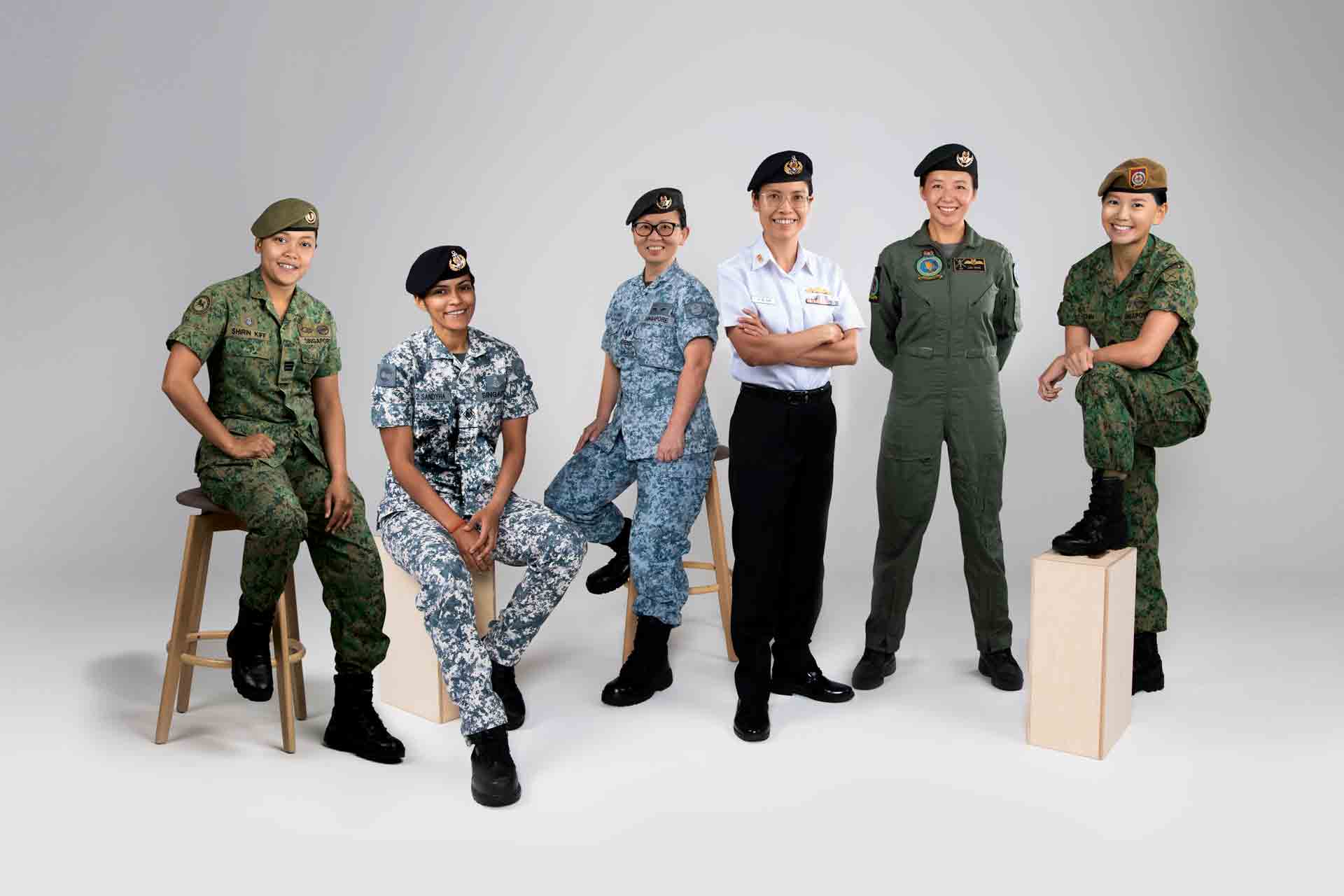
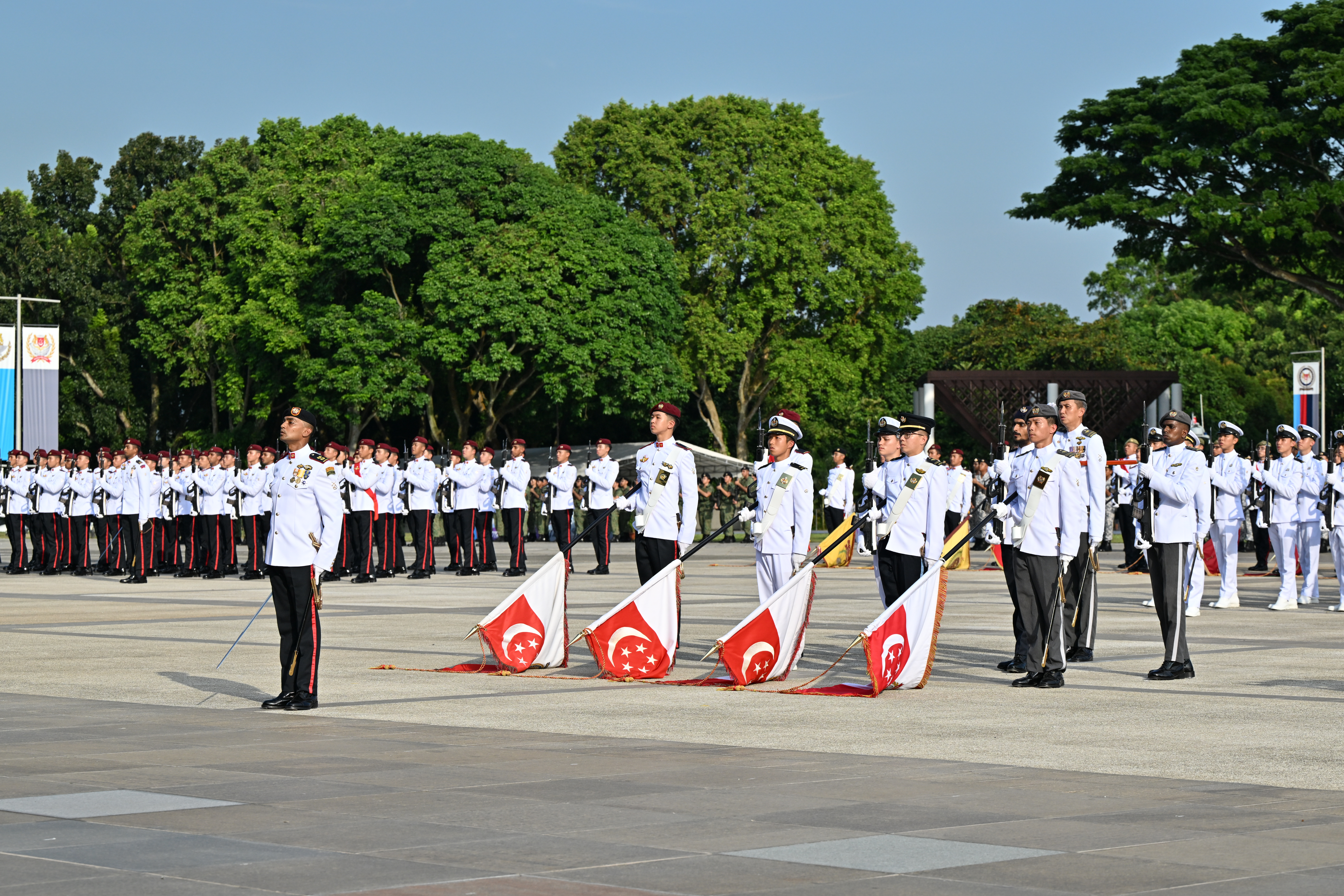
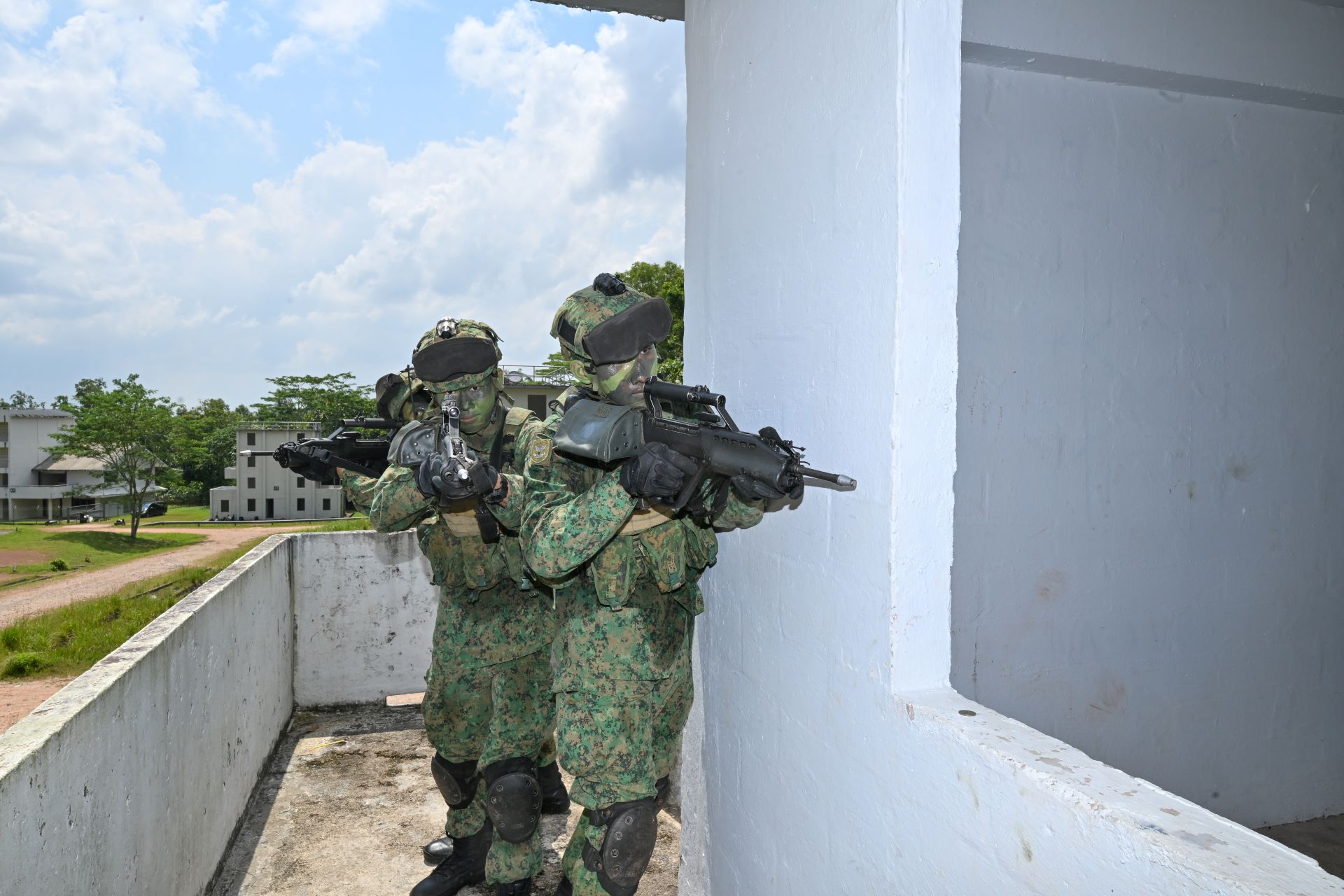
.jpg?sfvrsn=b5383902_1)
.jpg?sfvrsn=4eb1b86e_1)
